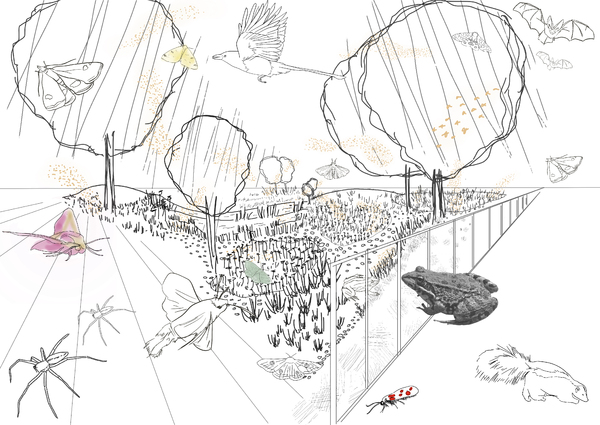The project “Moon Garden, Designing for Moths Towards Biodiversity” explores how to enhance biodiversity in Manchester city by learning from Brownfield sites. The aim is to design a space that enables species to thrive in a biodiverse environment and move from one habitat to the other. The bigger goal is to protect the ecosystem, the wildlife, and the species.
The chosen site is an abandoned car park located on the North-East side of Manchester. It was chosen due to the fact that it is an abandoned area classified as a brownfield, yet it still has the potential to become a biodiverse space with some human intervention.
The main purpose of the project was to decenter humans in our designs because centering them has led to a climate emergency and a biodiversity crisis. The beginning of a solution would be to tackle these effects by centering other species in our designs, and in this case; Moths were the chosen species.
Moths can fascinatingly use the Moon and Stars to navigate, but, their population is highly declining due to multiple human actions such as light pollution. This was the first reason I chose Moths as my chosen species to design for.
They are pollinators, contribute highly to biodiversity, and have multiple values such as educational, health, economic, and ecosystem-related values.
The abandoned car park in my design is to be turned into a space that is friendly for Moths, contributes to the biodiversity, plays a role in the food chain, allows very minimal human intervention with the aim of interfering as much as needed to create this space, and then letting it be...
Also, the constant human aspect in my project would allow children to use the tree house provided there in order to observe the Moths’ behavior. This would be created for playful yet educational purposes that would teach children how to interact with other species.


